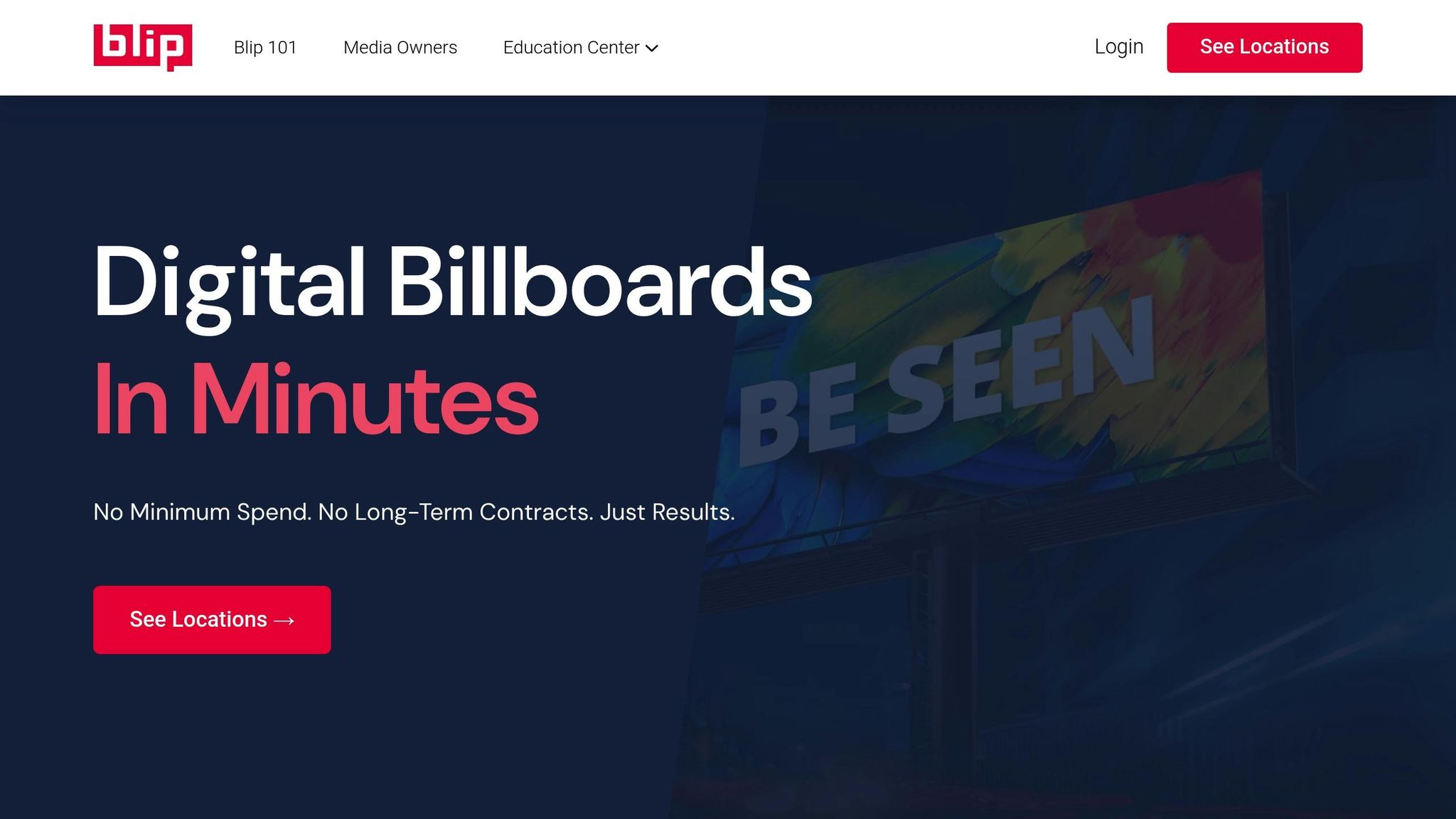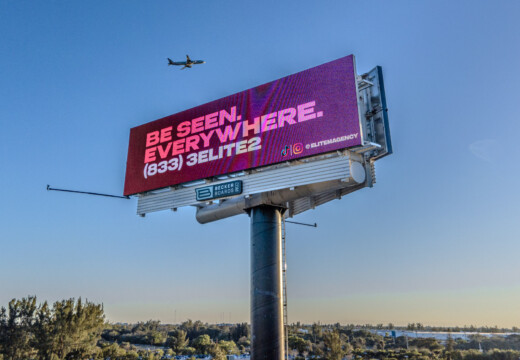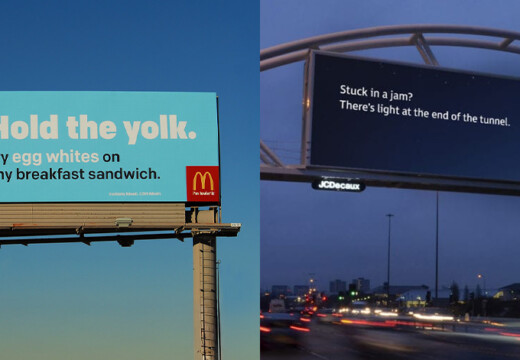Billboards are big, bold, and public – but are they effective? Measuring billboard conversions used to be tough, but new analytics tools make it easier to track performance and ROI. Here’s how modern tools are transforming billboard advertising:
- Count Views with Mobile Data: Track how many people see your billboard using location data from mobile devices.
- Link Views to Sales: See how many viewers visit your store or make purchases after seeing your ad.
- Get Real-Time Updates: Monitor campaign performance instantly with live dashboards.
- Optimize with Insights: Use data to adjust timing, location, and messaging for better results.
With platforms like Blip, you can track impressions, costs, and conversions in real time – starting with just $20 a day. Ready to make smarter decisions about your billboard ads? Keep reading for actionable tips and tools to maximize your ROI.
Can You Measure Billboard ROI? Yes, Here’s How!
Analytics Tools for Billboard Measurement
Analytics tools have revolutionized how businesses evaluate billboard campaigns, offering detailed insights that make measuring advertising success more precise and actionable.
Using Location Data to Count Views
Mobile data plays a key role in accurately counting billboard impressions. By tracking the presence and duration of mobile devices within a billboard’s viewing range, businesses gain precise data on how many people see their ads and for how long. This approach also uncovers viewer behavior patterns, offering a deeper understanding of audience engagement.
“It’s not a social media thing that you see on your phone. It’s not word-of-mouth. It’s big and bold and out there in public. I would say this is the first step of looking big and public”.
This level of detail allows businesses to link ad exposure directly to customer actions, creating a clear roadmap for measuring campaign impact.
Connecting Billboard Views to Sales
Advanced analytics platforms take things further by connecting billboard exposure to real-world sales. By tracking device movements from billboard locations to physical stores, businesses can identify how many viewers actually become customers. When this data is paired with purchase information, it provides a clear view of return on investment (ROI) and helps optimize campaigns across various channels.
Live Performance Updates
Real-time updates are another game-changer. With live dashboards, advertisers can monitor campaign performance instantly, tracking metrics like impressions, engagement patterns, cost per thousand impressions (CPM), and view-through rates. This immediate feedback allows for quick adjustments to placement, timing, or messaging.
“Blip works for us. It’s a different medium, and it brings a lot of exposure. It sets us apart from the rest of the [competition], and that’s what I like”.
Armed with these insights, advertisers can make smarter, data-driven decisions to ensure their campaigns deliver maximum impact and ROI.
Blip‘s Analytics Features

Blip’s analytics dashboard provides tools designed to help users fine-tune their billboard campaigns with real-time insights.
Data Dashboard Overview
Blip’s user-friendly dashboard highlights essential metrics, giving a clear picture of campaign performance. With updates every 10 minutes, users can stay ahead by monitoring their bids and adjusting strategies as needed. The dashboard tracks:
- Daily impressions
- Average CPM
- Total plays
- Budget usage
Additionally, performance maps offer a closer look at how campaigns are doing in specific locations.
Location Performance Maps
Blip’s interactive marketplace includes performance maps that break down how billboards perform across different areas. These maps help businesses make smarter decisions by offering insights like:
| Metric Type | Data Provided | Business Value |
|---|---|---|
| Traffic Analysis | Daily vehicle counts | Estimates potential audience reach |
| Performance Tracking | Location-specific CPM | Compares cost-efficiency across locations |
| Audience Insights | Peak viewing times | Helps schedule ads for maximum visibility |
This detailed data ensures campaigns are optimized for both reach and cost-efficiency.
Cost-Per-Play Tracking
Blip’s pay-per-play model makes it easy to track spending in real time, with campaigns starting at just $20 per day. The system provides precise monitoring of display costs and performance at different times, while competitive pricing is maintained through 10-minute bidding updates.
“Billboards are one of the most impactful ways to advertise, and with Blip, you spend a fraction of what you would end up paying elsewhere.”
- Ray Bowens, Founder, Hashtag-Vape
sbb-itb-2e2e93f
Advanced Billboard Measurement Methods
Advanced analytics take billboard advertising to the next level, offering advertisers tools to not only evaluate current performance but also strategically plan for future campaigns. Let’s dive into how data can shape and measure the success of outdoor advertising.
Using Data to Plan Future Ads
Historical data plays a crucial role in refining billboard strategies. By analyzing past campaign performance, advertisers can make smarter, data-driven decisions. For instance, real-time bidding systems – which update every 10 minutes – help pinpoint the best advertising windows based on performance trends.
When planning your next campaign, focus on these key metrics:
| Metric Type | What to Analyze | How It Helps |
|---|---|---|
| Peak Hours | Engagement times | Schedule ads during high-impact periods for better visibility. |
| Location Performance | CPM and impression data by area | Identify which billboard locations deliver the best results. |
| Budget Efficiency | Conversion costs by time and location | Allocate spending to maximize ROI. |
These insights ensure your campaigns are both effective and cost-efficient.
Measuring Combined Marketing Effects
Billboards don’t operate in isolation – they often work alongside other marketing efforts. Evaluating how outdoor ads enhance broader campaigns can unlock a deeper understanding of their value.
Here’s how to measure the combined impact of your billboard advertising:
- Track Multi-Channel Metrics
Keep an eye on website traffic, store visits, and sales during your billboard campaigns. Comparing these numbers to baseline periods can reveal how your outdoor ads contribute to overall business growth. - Analyze Geographic Performance
Look at how specific billboard locations influence online and offline conversions. This helps you determine the geographical reach and effectiveness of your ads. - Monitor Brand Awareness
Pay attention to changes in brand recognition and customer engagement. This will help you understand how billboards amplify your overall marketing strategy and strengthen your presence across channels.
Conclusion: Better Billboard Results Through Analytics
Thanks to detailed analytics and real-time insights, advertisers now have a straightforward way to achieve measurable success with billboard campaigns.
Key Takeaways
Analytics have completely changed billboard advertising, moving it away from guesswork to a more precise, data-driven strategy. With advanced tools, advertisers can optimize campaigns in real time, track performance accurately, and clearly demonstrate ROI. Here are some standout benefits:
| Benefit | Impact | How It’s Measured |
|---|---|---|
| Real-Time Optimization | Campaign adjustments in 10 minutes | Performance tracking dashboards |
| Location Intelligence | Targets high-traffic areas | Geographic heat maps |
| Budget Efficiency | Pay-per-play spending model | Cost-per-play analytics |
| Performance Tracking | Measures campaign effectiveness | Impression and conversion data |
“Billboards are one of the most impactful ways to advertise, and with Blip, you spend a fraction of what you would end up paying elsewhere”.
How to Get Started with Analytics
Starting your billboard campaign with clear goals and measurable metrics is essential. Here’s how to begin:
- Define your objectives and KPIs: Be clear about what success looks like for your campaign.
- Choose locations wisely: Use performance metrics to identify the best spots for your ads.
- Track impressions daily: Monitor how many people are seeing your ads.
- Make data-driven adjustments: Use insights to tweak and improve your campaign as it runs.
If you’re new to billboard analytics, you can start small with a daily budget of $20. This allows you to test, gather insights, and refine your strategy without overspending. The pay-per-play model ensures you’re only paying for ads that are actually displayed, making it easier to measure and improve your ROI.
FAQs
How is the number of views for a billboard measured using mobile data?
This article doesn’t dive into how mobile data is used to measure billboard views. Instead, it highlights creative methods and analytics tools that help track the performance of billboard ads and measure conversions effectively.
What are the benefits of using real-time analytics to measure the success of billboard ads?
Real-time analytics give you a clear view of how your billboard campaigns are performing, offering insights that help you measure their impact and make smarter decisions. By tracking metrics like impressions, audience demographics, and campaign reach, you can see how well your ads are connecting with viewers.
With features like real-time reporting, you can quickly tweak your strategy, fine-tune ad placements, and get the most out of your advertising budget. This level of insight and flexibility makes it easier to measure success and fine-tune your campaigns for better results.
How can businesses track the impact of billboard ads on sales and measure their return on investment (ROI)?
Billboards are an excellent way to boost brand visibility, but connecting their impact to actual sales and calculating ROI can be tricky. To tackle this, businesses can integrate tools like unique URLs, QR codes, or dedicated phone numbers directly into their billboard designs. These additions make it easier to track specific interactions and link them back to the campaign’s success.
Platforms such as Blip also offer detailed analytics, tracking key metrics like impressions and cost-per-thousand (CPM). By diving into this data, businesses can get a sense of how many people their ads are reaching and how these efforts align with broader marketing objectives. Pairing this information with sales figures or customer feedback can provide a more complete view of the campaign’s return on investment.
Related posts
- Integrate Billboard ROI with Google Analytics
- Geo-Analytics for Billboard ROI
- How Data Improves Billboard Audience Targeting
- How to Analyze Billboard Engagement Metrics
This article doesn’t dive into how mobile data is used to measure billboard views. Instead, it highlights creative methods and analytics tools that help track the performance of billboard ads and measure conversions effectively.
"}},{"@type":"Question","name":"What are the benefits of using real-time analytics to measure the success of billboard ads?","acceptedAnswer":{"@type":"Answer","text":"
Real-time analytics give you a clear view of how your billboard campaigns are performing, offering insights that help you measure their impact and make smarter decisions. By tracking metrics like impressions, audience demographics, and campaign reach, you can see how well your ads are connecting with viewers.
With features like real-time reporting, you can quickly tweak your strategy, fine-tune ad placements, and get the most out of your advertising budget. This level of insight and flexibility makes it easier to measure success and fine-tune your campaigns for better results.
"}},{"@type":"Question","name":"How can businesses track the impact of billboard ads on sales and measure their return on investment (ROI)?","acceptedAnswer":{"@type":"Answer","text":"
Billboards are an excellent way to boost brand visibility, but connecting their impact to actual sales and calculating ROI can be tricky. To tackle this, businesses can integrate tools like unique URLs, QR codes, or dedicated phone numbers directly into their billboard designs. These additions make it easier to track specific interactions and link them back to the campaign's success.
Platforms such as Blip also offer detailed analytics, tracking key metrics like impressions and cost-per-thousand (CPM). By diving into this data, businesses can get a sense of how many people their ads are reaching and how these efforts align with broader marketing objectives. Pairing this information with sales figures or customer feedback can provide a more complete view of the campaign's return on investment.
"}}]}


